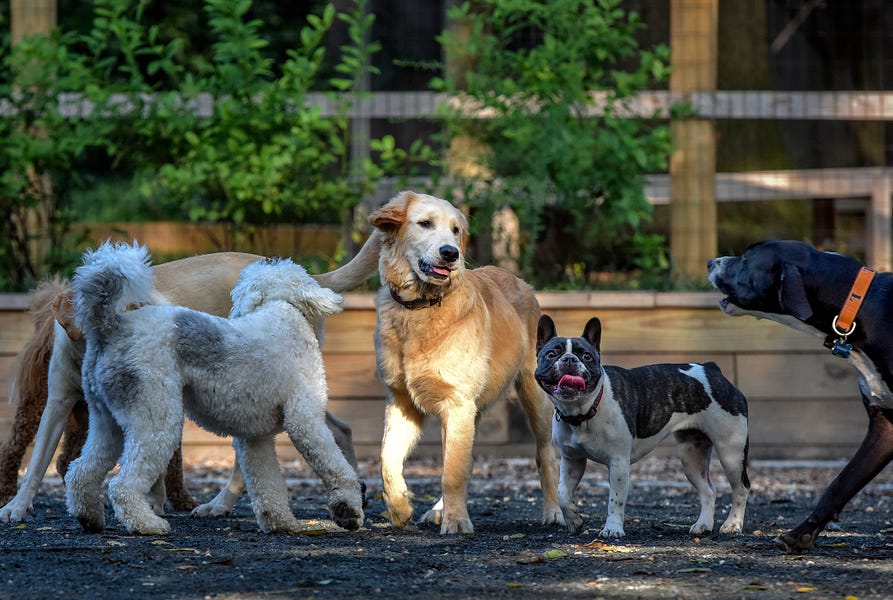During our travels throughout the summer and fall, my son and I regularly stopped at playgrounds to allow him to stretch and blow off steam after long car rides. On every occasion, we were approached by other families who either welcomed us to the area or just wanted to chat and get to know us. In the small town of Clearwater, Minnesota, for instance, a family came right over, asked if we were moving to the area, and immediately offered to show us around. We had similar experiences on the playgrounds of New England, Colorado, Georgia, and even New York City.
This story is not unique. Friendships and communities are formed on the playground thanks to the very nature of the space. That might not sound like much, but in an era where we are not only increasingly polarized but also actively isolating ourselves thanks to technology civic leaders are seeking effective and cost-effective ways to strengthen communities and bring people together. As they do this they should consider the two “P’s” of neighborhood life—playgrounds and parks.
Two years ago, social scientist Eric Klinenberg’s book Palaces for the People highlighted how public projects can help build the networks of relationships among people who live and work in a community, and in doing so fostering bonds of civic life. Specifically, Klinenberg asked what role such projects can have in healthy and vibrant local communities.
Evidence suggests they can play a major role, provided that leaders choose the right kind of institutions. Unfortunately, far too much attention has been paid to large expensive palace-like projects.
Take, for example, Long Island City’s new $41 million dollar Hunters Point Library. The library is meant to be “a locus of neighborhood pride for Long Island City” but has been a beacon of controversy. Community pride can certainly be a positive. But at what cost?
The city of Boston is revamping the Edward Logue’s seven-acre, desolate “city hall plaza,” for instance, into a “welcoming front yard for civic life” with a price tag of $70 million. One has to wonder how an area surrounded by highways and government buildings with virtually no residential presence will truly become a meaningful public place beyond the occasional citywide celebration. Santiago Calatrava’s now completed $4 billion Oculus/World Trade Center project in Lower Manhattan was conceived as a civic space but is nothing close to that. In reality, the soaring space is touristy, its retail offerings are global chains and are struggling, and the site is generally avoided by local New Yorkers who not only live nowhere near the area, but often only pass through to area to make transit connections.
These real and proposed show-palaces are not instrumental in creating meaningful and localized communities whatsoever and, worse, they come at the expense of parks and playgrounds—far cheaper alternatives that have proven more effective at building community.
When Americans live near a variety of public places and spaces—from cafes and bars to shopping areas and parks, playgrounds, or beaches—trust in others and sense of community increases. Data from the American Enterprise Institute’s (AEI) Survey on Community and Society finds that individuals’ feelings of loneliness and isolation decline, and faith in local government is higher in these places than in areas with fewer communal amenities.
Parks, in particular, seem to matter quite a lot. Americans living closer to parks are appreciably more likely to believe they know and share the same values with their neighbors, rate their neighborhood “good” or “excellent” places, and are more willing to help each other with various needs.
What’s even simpler—and cheaper—than a park with a picnic area, some swings, and a jungle gym? How about a dog park? The AEI data show what is clear to those who live near a dog park and observe the rituals of owners who frequent them: having and regularly walking a dog plays a very powerful role in stimulating community engagement.
The logic is simple: If you regularly walk your dog, you are far more likely to be out in one’s neighborhood habitually. In turn, you are likely to engage with other people, as dogs compel interactions with other owners and public spaces. This is likely to trigger greater familiarity and social trust within the community.
AEI data confirms this observation: 64 percent of dog owners who regularly walk their dogs say they know their neighbors very or fairly well, compared to 54 percent of dog owners who do not walk their dogs regularly and 49 percent of non–dog owners. Higher shares of people who own a dog and walk them regularly also say they talk to their neighbors at least a few times a week.
Civic behavior is affected too, perhaps as a result of greater concern for local policies and improvement of public spaces. Those who walk their dogs report higher participation in local elections. Sixty-seven percent of dog owners who regularly walk their dogs vote in local contests, compared with 59 percent who either do not own a dog or walk it themselves. The data show that dogs draw their owners into greater public engagement.
Of course, building a dog park or playground is not going to immediately transform a community into a model of civic virtue. Playgrounds and dog parks can unite communities but they can also be places of division and contention. If certain playgrounds are not open to all or become entangled in local politics, engagement can be stifled or even hostile. In dog parks, there are regular arguments between leash and dogs-run-free advocates and various debates about dog and human safety. Settling these arguments is a concern for local communities, and should be done with an eye toward realizing the purpose of these public spaces: Fostering communal harmony and social trust.
Despite these potential problems, dog parks and playgrounds provide a significantly more affordable and proven form of valuable communal space. Visually stunning and prestigious as they may be, “palaces for the people” are an expensive way to strengthen communities and bringing people together. As planners look to improve social capital in their neighborhoods, they would be well-advised to consider humbler, more affordable places where people can meaningfully and regularly connect.
It is no accident that I had such wonderful communal experiences public places with my son in my travels around Colorado and Minnesota either. It turns out that planners in places such as Denver and Minneapolis, for instance, are keenly interested in local parks and their amenities. The Minneapolis park system is developing a plan to invest $400 million over 20 years into 157 neighborhood parks and highlighted investment areas include playgrounds, athletic fields, dog parks, ice rinks, and wading pools—all essential for creating and promoting civic space—while “palace-like” projects were notably absent. Going forward, we should remember that thinking small is the key to real community.
Samuel J. Abrams is professor of politics at Sarah Lawrence College and a visiting scholar at the American Enterprise Institute.
Photograph of a dog park by Bill O’Leary/Washington Post/Getty Images.






Please note that we at The Dispatch hold ourselves, our work, and our commenters to a higher standard than other places on the internet. We welcome comments that foster genuine debate or discussion—including comments critical of us or our work—but responses that include ad hominem attacks on fellow Dispatch members or are intended to stoke fear and anger may be moderated.
With your membership, you only have the ability to comment on The Morning Dispatch articles. Consider upgrading to join the conversation everywhere.